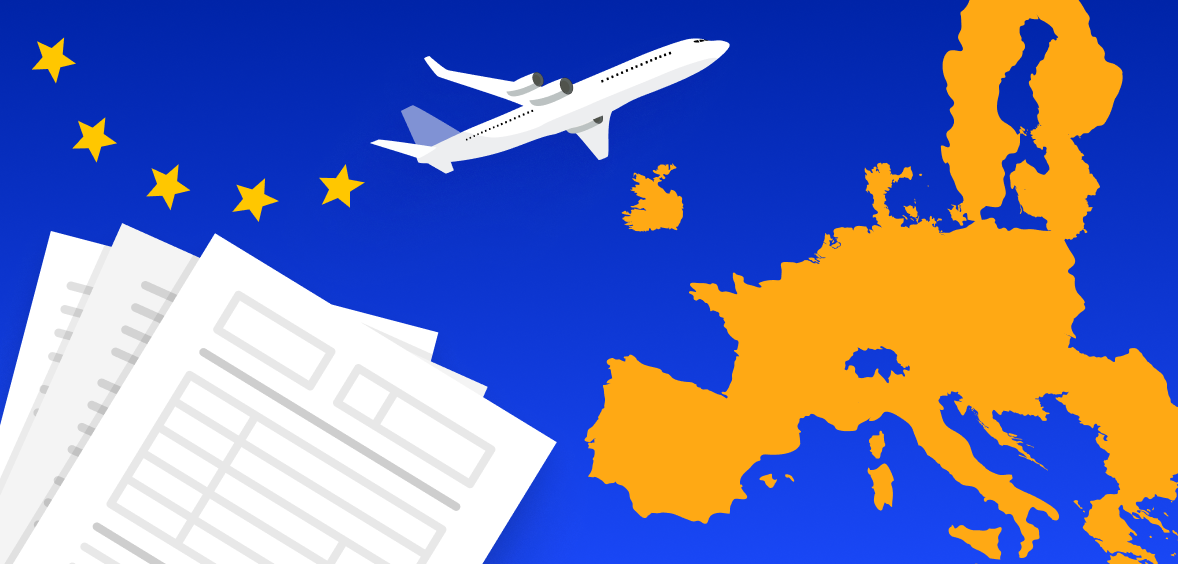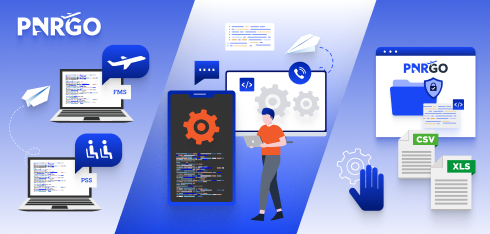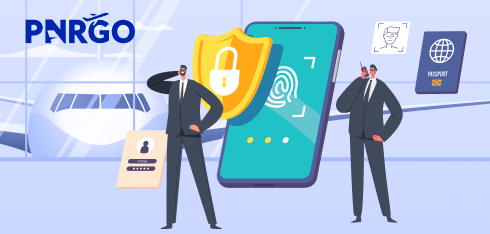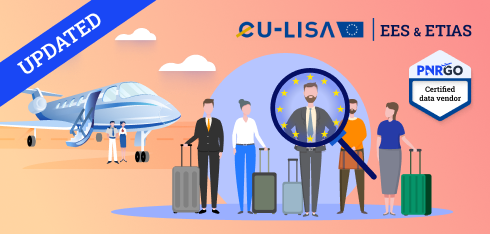October saw the updated roadmap for the delivery of the eu-LISA IT systems designed to fight crimes and improve border security. EES and ETIAS are part of this architecture. What should you be doing now as a carrier?
On 19-20 October 2023, during the Justice and Home Affairs Council meeting, eu-LISA presented the new timeline for the roll-out of EU information systems devised to fight crime, control borders, and manage migration. EES and ETIAS are part of this centralized approach and will be implemented in the next two waves. At a later stage, the Visa Information System (VIS) will also be revised to close some security information gaps. This will affect the carriers by expanding the range of documents that will require digital verification.
EES and ETIAS to enter into operation in 2024/2025
According to the latest information, the launch date for the Entry Exit System is now foreseen for Q3/Q4 2024. As a result, the European Travel Information and Authorisation System is planned for Q1/Q2 2025 (ETIAS is supposed to launch a few months after EES). Both systems require a carrier interface that is currently under development.
eu-LISA Carrier Interface
The system developed by eu-LISA – called Carrier Interface – will allow carriers to send verification queries and check, where applicable:
- if their passenger holding a uniform short-stay visa for one or two entries has already used their number of entries,
- or if they hold valid ETIAS travel authorisation.
The access will be possible using these three methods:
- a system-to-system interface (for automated submission);
- a web portal (for manual submission);
- a mobile application (for manual submission).
Action plan for carriers to prepare for EES and ETIAS launch
Even though the launch dates for EES and ETIAS systems have not been clearly specified, operators still need to register and choose the connectivity methods. It’s best to give yourself enough time to deal with all the necessary paperwork and prepare for the system tests, to obtain the necessary certification and ensure seamless passenger validation against the centralized eu-LISA databases.
Not sure where to start? Here is your simple action plan:
- Choose between the manual and automated passenger data submission. Or consider having more than one submission method in place.
- In case you prefer to validate passengers manually:
- Go to the eu-LISA website, download the F01 and F07 forms, fill them out and email them to carriers_onboarding@eulisa.europa.eu.
- Wait for the reply with further instructions. Depending on the data transfer method selected in your F01 form, you may need to fill out more forms.
- Once requested, you will have to deliver a training session to your staff authorized to access the eu-LISA systems, and submit a declaration of readiness.
- In case you would like to check passengers automatically:
- If you are already our customer, reach out to our Support team. We will prepare all the required documents and take over the communication with the eu-LISA representatives.
- If you would like to start your journey with PnrGo, please contact our Sales team.
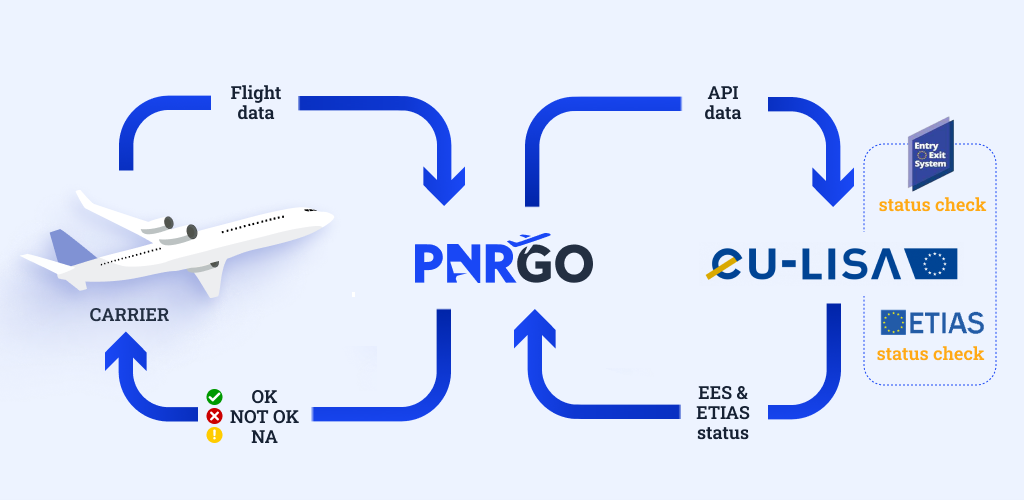
PnrGo as your eu-LISA service provider
PnrGo offers an eu-LISA system-to-system connection that allows carriers to benefit from automated EES & ETIAS data transfer and validation. Carriers who secure a contract with us in advance will not be charged until the official launch of EES. In the meantime, we provide complimentary support in filling out the necessary registration documents.
If you have any questions about our eu-LISA service, feel free to contact one of our Sales Representatives.


